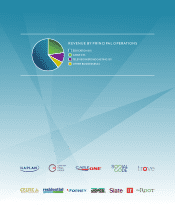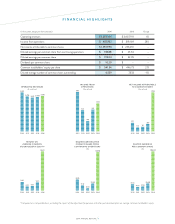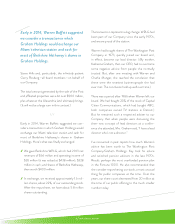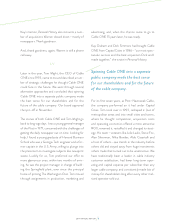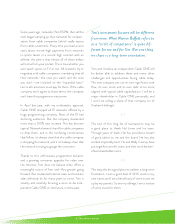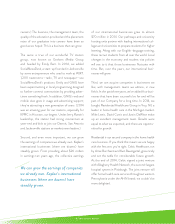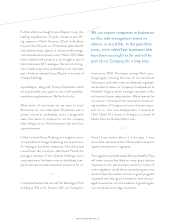Washington Post 2014 Annual Report Download - page 8
Download and view the complete annual report
Please find page 8 of the 2014 Washington Post annual report below. You can navigate through the pages in the report by either clicking on the pages listed below, or by using the keyword search tool below to find specific information within the annual report.
6 2014 ANNUAL REPORT
Some years ago, networks (first ESPN, then all the
rest) began ramping up their demands for compen-
sation from cable companies (which really means
from cable customers). Every time you read a news
story about record-high payments from networks
to sports teams or a record-high contract with an
athlete, the plan is that almost all of those dollars
will come from your pocket. This is true whether you
ever watch sports on TV or not. All networks try to
negotiate with cable companies, mandating that all
their networks—the ones you watch and the ones
you don’t—are included on the “expanded basic”
tier so all customers must pay for them. If the cable
company won’t agree to those terms, the company
can’t have the programs on any terms.
In April last year, with my enthusiastic approval,
Cable ONE dropped all 15 networks oered by a
huge programming company. Most of the 15 had
declining audiences. But the company demanded
more than a 100% rate increase. This has become
typical. Networks know it’s hard for cable companies
to drop them, and in the confusing controversies
that follow, it’s always clear that the cable company
is dropping the network, and it isn’t always clear that
the network is trying to gouge the consumer.
Thanks to this unfortunate programmer behavior
and a growing consumer appetite for video over
the Internet, Tom does not believe video oers a
meaningful source of free cash-flow growth going
forward. But residential Internet sales and business
sales definitely do for many years to come. Tom is
smartly and carefully focusing a soon-to-be inde-
pendent Cable ONE on the future, not the past.
Tom and I believe an independent Cable ONE will
be better able to address these and many other
challenges and opportunities facing cable today.
The new company can use its own significant cash
flow, its own stock and its own debt to be more
aligned with typical cable capitalization. I will be a
major shareholder in Cable ONE personally, and
I won’t be selling a share of that company (or of
Graham Holdings).
/ / /
The end of this long list of transactions may be
a good place to thank Hal Jones and his team.
Through years of deals, Hal has provided a stream
of good advice to me and the board. He has also
worked impossibly hard. He and Wally Cooney have
put together a terrific team, and their work has ben-
efited shareholders a lot.
/ / /
This may also be a good place to address a long-term
frustration. I own a good deal of GHC stock in my
own name, and I am a beneficiary of some trusts set
up by my parents. So are my siblings; I am a trustee
of some trusts for them.
Tim’s investment focuses will be different
from mine. What Warren Buett refers to
as a “circle of competence” is quite dif-
ferent for me and for Tim. But one thing
we share is a long-term orientation.


